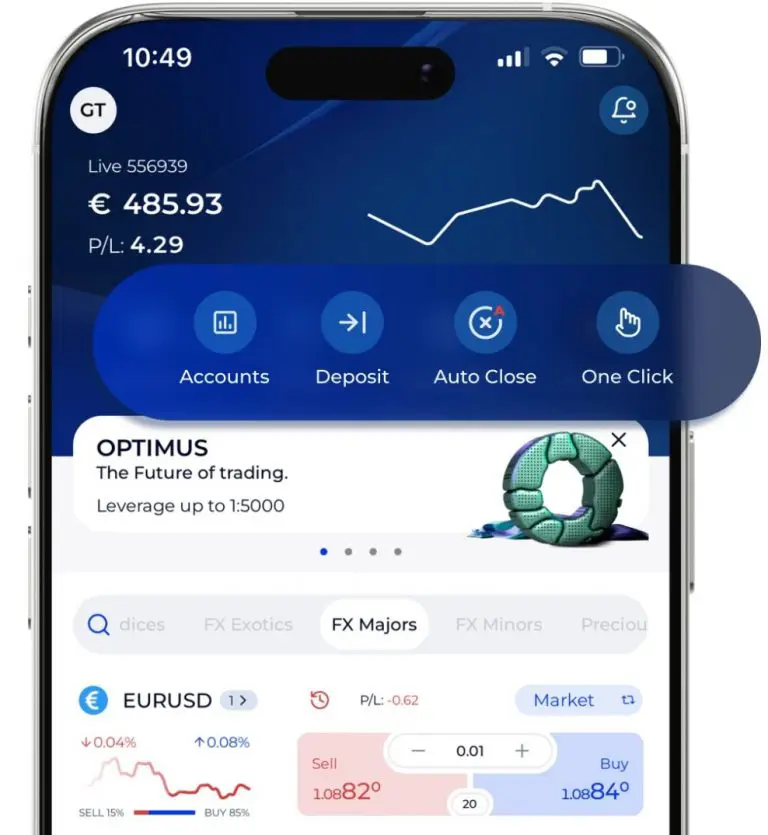Forex Oscillators Introduction
South Africa’s forex market presents unique opportunities for traders equipped with the right technical analysis tools. Oscillators have become indispensable instruments for South African traders navigating the volatile ZAR pairs and major currency markets. As the Johannesburg Stock Exchange (JSE) continues to influence regional forex trends, understanding oscillator dynamics becomes crucial for both novice and seasoned traders operating in the South African trading environment.
Oscillator Fundamentals in South African Context
The South African forex landscape, characterized by its unique relationship with commodity markets and ZAR sensitivity, requires a specialized approach to oscillator trading. These mathematical tools fluctuate between predetermined boundaries, typically scaled from 0 to 100 or -100 to +100, providing crucial insights into market momentum and potential reversals specific to African market conditions.
Essential Oscillators for South African Markets:
• Relative Momentum Index (RMI)
• Moving Average Convergence Divergence (MACD)
• Williams %R
• Ultimate Oscillator
• Money Flow Index (MFI)

Strategic Oscillator Combinations for African Markets
| Primary Tool | Secondary Tool | Market Condition |
| RMI | Williams %R | High Volatility |
| MACD | MFI | Commodity-Driven |
| Ultimate | RMI | Range-Bound |
| MFI | MACD | Trend-Following |
Implementation Framework for South African Traders
Critical Implementation Elements:
- ZAR Correlation Analysis
- Commodity Price Impact
- Local Market Hours
- Global Market Overlap
- South African Economic Indicators
Advanced Trading Techniques for African Markets
South African traders leverage these sophisticated approaches:
• Commodity-Currency Correlations
• Multi-Market Confirmation
• Economic Calendar Integration
• Regional Volatility Patterns
• Cross-Border Money Flow Analysis
Step-by-Step Implementation Guide for South African Markets
| Oscillator | Period Setting | Overbought Level | Oversold Level |
| RMI | 21 | 75 | 25 |
| Williams %R | 10 | -20 | -80 |
| MACD | 8,21,5 | N/A | N/A |
African Market Context Assessment
- ZAR strength evaluation
- Commodity market correlation check
- Regional political impact analysis
- Local liquidity assessment
- Cross-border capital flow monitoring
Pre-Trade Verification List:
□ ZAR trend confirmation
□ Commodity price alignment
□ Local market volume analysis
□ Position sizing for ZAR volatility
□ Risk parameters adjustment
□ Multiple exit scenario planning
□ Local market hours consideration
Oscillator Signal Integration
- Primary indicator validation
- Secondary confirmation analysis
- Regional volatility adjustment
- Multiple timeframe correlation
- Local market sentiment integration
Position Management Protocol
Active Trade Monitoring:
a) Initial Position Handling
• ZAR-specific entry timing
• Volatility-adjusted stop placement
• Trade rationale documentation
• Real-time news monitoring
• Initial market reaction assessment
b) Ongoing Position
Management
Oscillator signal tracking
• Dynamic stop adjustment
• Commodity correlation monitoring
• Cross-pair analysis
• Local market impact assessment
South African Exit Framework
Exit Criteria Matrix:
□ Oscillator reversal signals
□ ZAR technical targets
□ Commodity-driven stops
□ Trend exhaustion indicators
□ Local market session limits
South African Trading Scenarios

ZAR/USD Implementation
- Monitoring commodity impact on oscillators
- Local market hour confirmation
- Volume profile analysis
- Position sizing based on ZAR volatility
- Stop placement considering local spreads
- Gold-ZAR Correlation Strategy
- Integration of gold price movements
- Oscillator alignment with commodity cycles
- Mining sector impact analysis
- Cross-market confirmation
- Risk management for dual-market exposure
| Primary Signal | Regional Confirmation | Entry Condition | Exit Parameters |
| RMI Crossover | Commodity Alignment | ZAR Support/Resistance | Profit Target |
| MACD Signal | Regional Market Flow | Local Session Timing | Trailing Stop |
| Williams %R Edge | JSE Market Direction | Volume Surge | Technical Reversal |
Troubleshooting Guide for South African Markets
Common Implementation Challenges:
Local Market Volatility
- Solution: Wider stop-loss parameters
- Enhanced position sizing models
- Market hours-based filters
Economic Event Impact
- Solution: South African event calendar integration
- Pre-event position adjustment
- Post-announcement trading protocols
Regional Risk Management
- Solution: ZAR-specific risk parameters
- Commodity correlation hedging
- Cross-border exposure limits
Conclusion
Success in South African forex trading requires a sophisticated understanding of both technical indicators and local market dynamics. Oscillators must be calibrated to account for unique characteristics of the ZAR market, including commodity correlations, regional political factors, and local trading hours. A systematic approach combining rigorous testing, continuous monitoring, and adaptation to local market conditions is essential.
FAQ
How should traders adjust oscillator settings during South African political events?
Implement wider oscillator bands and reduce position sizes 48 hours before and 24 hours after major political announcements.
What is the optimal approach for handling oscillator signals during resource market volatility?
Cross-reference oscillator signals with commodity price action and adjust entry points based on correlation strength.
How can traders optimize oscillator settings for ZAR pairs?
Customize periods based on average daily ZAR volatility and adjust overbought/oversold levels to account for local market characteristics.













